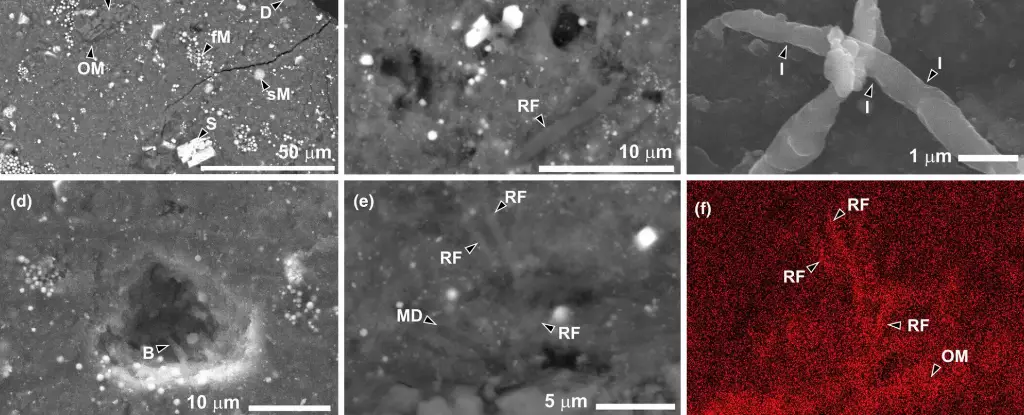The notion that life on Earth may have extraterrestrial origins has intrigued scientists and philosophers alike for centuries. With evidence of complex organic compounds found scattered throughout the cosmos, the theory of panspermia—a hypothesis suggesting that life could have been seeded on Earth from elsewhere in the universe—has resurfaced in contemporary discussions. A recent study sparked renewed interest in the debate, but closer examination reveals the nuances and challenges inherent in this idea.
As technology has evolved, so has our understanding of the universe. We are now aware that space is not a sterile void; instead, it is teeming with organic molecules. From cold molecular clouds to the rocky surfaces of asteroids, these compounds represent the basic building blocks of life as we know it. Furthermore, the notion that comets or meteorites could have delivered these essential chemicals to Earth has been a point of interest for many researchers. This theory stipulates that our planet might not have been the cradle of life but rather a recipient of pre-existing biological materials from the cosmos.
The conceptual leap from organic compounds to fully formed life—cells or organisms—is significant and raises critical questions. How does one transition from inanimate chemical reactions to the complex systems that define biological entities? This is where the panspermia hypothesis steps into the spotlight, proposing that life did not solely generate on Earth but might have evolved in more favorable conditions on another celestial body, eventually hitching a ride on an asteroid or comet to reach our planet.
The panspermia concept gained traction during the 19th and early 20th centuries, primarily because life appeared unexpectedly early in Earth’s geological history. If life emerged shortly after the planet had cooled, scientists wondered about the processes that could catalyze such rapid evolution. A plausible explanation was that microbial life or its precursors existed elsewhere and merely arrived here through various cosmic means.
However, there remain considerable uncertainties surrounding the feasibility of life surviving the rigors of space travel. While certain organisms can endure extreme environments—some even thriving in outer space—the survival duration required for life to traverse vast cosmic distances raises skepticism. This is an essential point of contention among scientists; can microbial life endure for millions to billions of years and resist the harsh conditions of space travel?
The recent Hayabusa2 mission, which returned material from the asteroid Ryugu, generated excitement for the panspermia hypothesis. Scientists meticulously extracted samples, ensuring they were entirely contaminant-free during transportation back to Earth. Initial examinations revealed organic structures resembling microbial entities, igniting speculation that this could be tangible evidence for life beyond Earth.
Yet, while headlines proclaimed “life on an asteroid,” a careful analysis casts doubt on this sensational claim. Microbial life is ubiquitous on Earth, thriving in extreme environments and even found within highly controlled, sterile conditions. This means that even under rigorous precautions, contamination can occur. Upon further investigation, researchers noted the characteristics of the organic structures identified in the sample were consistent with Earth-based life, both in size and growth patterns.
This crucial finding underscores an essential lesson for astrobiology: our sterilization protocols may not be as foolproof as required. If we have inadvertently contaminated samples retrieved from other celestial bodies, the implications are vast, suggesting that life might already exist beyond Earth without us realizing it.
This new inquiry illuminates two primary conclusions. First, there is a pressing need for more rigorous contamination-control measures in space missions. As humanity moves toward interplanetary exploration, ensuring that terrestrial microbes do not colonize extraterrestrial environments—or vice versa—is paramount. Second, the presence of organic compounds on asteroids signifies potential habitats where life could proliferate, fostering the prospect of terraforming or colonization in the future.
While the debate over panspermia continues, it is evident that our explorations of space, asteroids, and other celestial bodies will provide crucial insights into the origins of life. Although we may not find definitive evidence that life on Earth came from another world, we may reveal that the universe is filled with the essential ingredients that allow life to exist, thrive, and potentially adapt beyond our home planet. The quest for understanding our existence remains ongoing, revealing that whether life began in the cosmos or here on Earth, the universe continues to be an extraordinary frontier for scientific discovery.


Leave a Reply